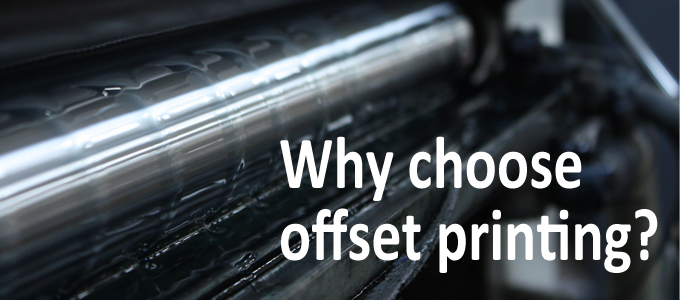We often have customers or clients ask us to explain the difference between offset printing and digital printing. Sometimes people hear the word digital and they jump to the conclusion that digital technology must be better than the older printing methods. In a lot of ways, digital printing can produce equal, if not better quality printed products than offset. But, there are still reasons to use offset printing.
Perhaps you’re set on digital printing and you want more information about the process and advantages. If you don’t want to rule out offset printing, keep reading.Offset printing is a common printing technique where an inked image is transferred from a metal plate, to a rubber cylinder and then rolled onto the printing surface. With lithographic offset printing, the repulsion of water and oil fuels the process. In essence, the non-printed area of the roller attracts water, while the oil-based ink is attracted only to the printing area.
Today, printers typically employ the offset method when a customer wants large quantity order, but there are more advantages to offset printing than just inexpensive, long-run printing. Below is a list of offset advantages to consider as you select the best method of printing for your next job.
High Quality
While digital presses can deliver high quality images and text, offset printing techniques produce sharp, and clean detail with no dot-based images. Although digital printing is precise and clean as well, the images aren’t as continuous as offset printed images. Additionally, offset printers can produce any Pantone or PMS colors, giving you the exact color you need. When you speak with your printer about selecting digital or offset, ask them specifics about how your images and text will print using each method. Some of our customers prefer offset press quality to digital printing, others prefer digital.
Cost Effective
While set up costs for offset printing can be pricier than digital printing, if you have a high volume print job, offset may be the way to go when trying to reduce costs.
Versatility
With offset printing you can print on a variety of surfaces including wood, metal, plastic, cloth and of course, paper. This means that offset printing can produce more specialized printed products. Additionally, offset printing can print on a variety of different sized papers and surfaces.
When it’s time to do your next print project, contact Alexander’s. We’d love to help.


